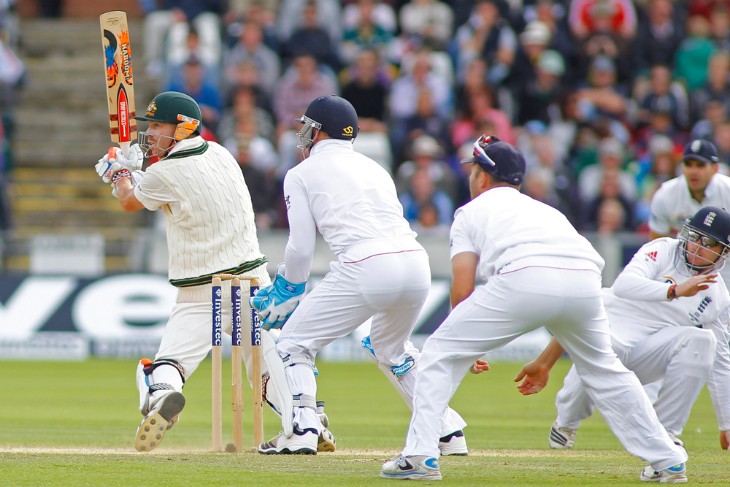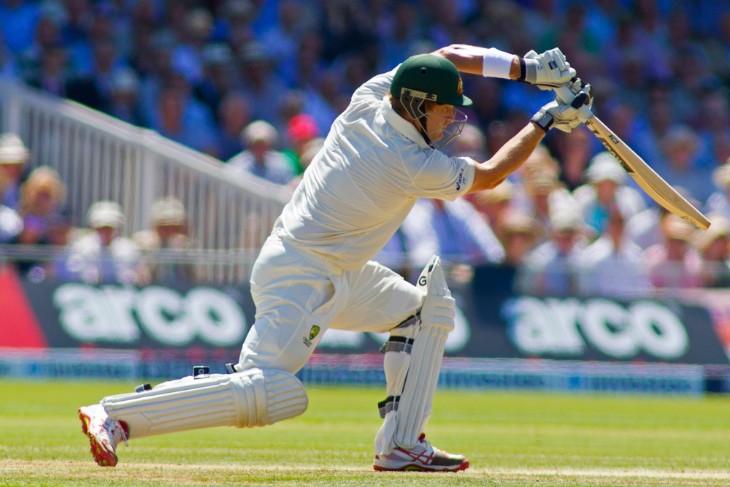- The Evolution of Cricket Tournaments
- Factors That Affect Betting Odds
- Impact of Tournament Format on Betting
- Test Cricket: The Traditional Format
- One-Day Internationals (ODIs): A Middle Ground
- Twenty20 (T20): The Fast-Paced Format
- Multi-Team Tournaments: World Cups and Beyond
- Round-Robin vs. Knockout Stages
- Home Advantage and Its Significance
- Player Form and Betting Odds
- In-Play Betting and Live Odds
- Conclusion
The Evolution of Cricket Tournaments
Cricket, a sport with a rich history, has seen its tournament formats evolve over the years. From the traditional Test cricket to the fast-paced Twenty20 (T20) games, the transformation has been nothing short of remarkable.
To comprehend the influence of tournament formats on cricket betting odds, it is crucial to first understand the concept of betting odds itself. Betting odds represent the probability of a particular event happening during a cricket match. In British odds format, odds are typically expressed as fractions, such as 2/1 or 5/2.
The first number in the odds fraction represents the potential profit relative to the stake, while the second number indicates the stake required. For instance, if you bet £10 at odds of 2/1 and your selection wins, you would receive £20 in profit plus your original £10 stake back. In contrast, odds of 5/2 would result in a £25 profit plus your £10 stake if your selection wins. Betting odds reflect the perceived likelihood of an event occurring. Lower odds suggest a higher probability, while higher odds indicate a lower likelihood according to bookmakers' assessments.
Factors That Affect Betting Odds
Cricket betting odds are not static figures but are influenced by a multitude of factors. These factors play a pivotal role in shaping the odds offered by bookmakers and can vary significantly depending on the format of the tournament. One of the fundamental factors is team composition. In cricket, the lineup of players chosen for a particular match can have a substantial impact on the outcome. In Test cricket, for example, where endurance and technique are crucial, the inclusion of experienced, top-order batsmen and skillful bowlers can heavily influence odds. Conversely, in T20 matches, teams with power-hitters and specialized bowlers may be favored.
Another crucial factor is the playing conditions, including the pitch and weather. In Test cricket, the state of the pitch can significantly affect the outcome, with slow, spinning pitches favoring teams with proficient spin bowlers. On the other hand, in T20 cricket, flat pitches that encourage high-scoring games may lead to different odds for teams with explosive batting lineups. Weather conditions can also disrupt matches, leading to changes in odds as matches are shortened or affected by rain delays. These are just a few of the many factors that bookmakers take into account when setting odds, and understanding these elements is essential for bettors to make informed choices.

Impact of Tournament Format on Betting
The influence of the tournament format on betting odds cannot be overstated. Each format presents its own set of challenges and opportunities for both teams and punters. In Test cricket, for instance, the longer duration of matches allows for greater fluctuations in the game, and odds can change dramatically as the match progresses. Teams with a strong bowling attack may start as favorites due to their ability to take wickets over extended periods.
Conversely, T20 cricket offers a more frenetic pace, and odds can be influenced by a team's ability to score quickly or defend a target. In these shorter formats, the margin for error is reduced, and the role of individual performances becomes more pronounced, making player form and team tactics crucial factors in determining odds. Multi-team tournaments like the ICC Cricket World Cup introduce a different dynamic altogether, as odds may be influenced by a team's track record in such competitions, historical performances, and the unique challenges posed by round-robin and knockout stages.
Test Cricket: The Traditional Format
Test cricket, often referred to as the "purest" form of the game, has a unique impact on cricket betting odds. Matches that can extend for up to five days require not only a higher level of skill but also a deep understanding of team dynamics and player form. When it comes to betting on Test matches, odds may fluctuate significantly over the course of the game. Factors such as the condition of the pitch, the quality of the bowling and batting line-ups, and even the weather can play a pivotal role in determining the odds.
Historically, teams that excel in Test cricket, like Australia and India, often start as favorites in Test matches. However, the longer duration of these games allows for a more comprehensive assessment of the situation, and odds can change dramatically during a match. A team that is struggling early on may see their odds improve if they manage to recover, while the odds for the initially favored team might lengthen.
One-Day Internationals (ODIs): A Middle Ground
One-Day Internationals (ODIs) offer a balance between the endurance required in Test cricket and the rapid action of T20 matches. In this format, matches are limited to 50 overs per side, and the pace of the game is noticeably faster than Test cricket. When it comes to betting odds in ODIs, certain factors come to the forefront. Team compositions that strike the right balance between power-hitters and disciplined bowlers tend to have an advantage.
Pitch conditions and the toss play an essential role, as they can determine whether a team opts to bat or bowl first, influencing the odds accordingly. In ODIs, the odds can change swiftly based on the performance of key players, particularly the openers and bowlers. A solid start by the batting team or a cluster of early wickets can cause odds to fluctuate. The impact of these factors on betting odds in ODIs makes it an exciting format for cricket enthusiasts and bettors alike, where strategic insights can make a significant difference in predicting outcomes.
Twenty20 (T20): The Fast-Paced Format
The advent of Twenty20 (T20) cricket has revolutionized the sport in more ways than one, including its impact on cricket betting odds. T20 matches are known for their explosive batting displays, aggressive bowling, and high-scoring contests. When it comes to betting on T20 matches, odds are influenced by a team's ability to adapt to this fast-paced format. Teams with power-hitters who can consistently clear the boundaries are often favored in T20 contests, as the ability to accumulate quick runs can be a game-changer.
Bowling in T20 cricket requires a different set of skills, with death overs specialists and bowlers who can execute yorkers and slower balls effectively becoming invaluable assets. The presence of such bowlers can significantly influence betting odds. Additionally, factors like the venue and the dimensions of the ground play a crucial role, as smaller grounds tend to witness higher scores and, subsequently, shorter odds for batsmen and teams capable of exploiting these conditions. The T20 format has also popularized in-play betting, where odds can change rapidly based on the current state of the match, making it imperative for bettors to stay engaged and well-informed throughout the game.
Multi-Team Tournaments: World Cups and Beyond
Multi-team tournaments like the ICC Cricket World Cup and T20 World Cup present unique challenges and opportunities for both teams and bettors. These tournaments feature a diverse range of teams from around the world, each with its own strengths and weaknesses. When it comes to betting odds, historical performance in such tournaments can be a significant factor. Teams with a strong track record in World Cups often start as favorites, reflecting their experience and ability to handle the pressure of high-stakes matches.
The format of these tournaments, which typically includes a combination of round-robin and knockout stages, adds an additional layer of complexity to betting odds. Teams that perform consistently in the group stages may find themselves with shorter odds as they progress to the knockout rounds. However, the pressure of sudden-death matches can also lead to unexpected upsets, causing odds to fluctuate.
Round-Robin vs. Knockout Stages
In the realm of cricket tournaments, the choice between round-robin and knockout stages significantly influences betting odds. Round-robin formats, as seen in some multi-team tournaments, involve each team playing every other team in a league-style competition. In such cases, odds can be influenced by consistency and overall performance throughout the group stage. Teams that consistently secure victories may see their odds shorten as they advance to the knockout rounds, reflecting their strong form.
Conversely, knockout stages, where teams face elimination with a single loss, introduce an element of unpredictability. In these stages, the importance of individual performances and handling pressure becomes paramount. Underdogs who manage to upset more fancied opponents often experience a shift in odds in their favor. The knockout format has a unique ability to create thrilling moments and reshape betting odds rapidly.
Home Advantage and Its Significance
Home advantage is a concept deeply ingrained in cricket and has a substantial impact on betting odds. When a team plays on their home turf, they often enjoy familiarity with pitch conditions, weather, and crowd support. As a result, they may start as favorites in betting markets. The pitch, in particular, can be tailored to suit the strengths of the home team, whether it favors spin bowling or high-scoring encounters.
Betting odds tend to reflect the perceived advantage of playing at home. However, it's important to note that home advantage can vary significantly depending on the venue and the opposition. Some stadiums have a reputation for favoring certain types of teams or pitches, which bookmakers take into account when setting odds. Additionally, the psychological impact of playing in front of a home crowd can be both an advantage and a burden, affecting team performance and subsequently influencing odds.
Player Form and Betting Odds
The form of individual players plays a pivotal role in shaping cricket betting odds. Whether it's a batsman's ability to consistently score runs, a bowler's knack for taking wickets, or an all-rounder's contributions with both bat and ball, player form is a critical factor that bookmakers consider when setting odds.
In cricket, it's not just about the statistics but also about the quality of play. A player in exceptional form may have a higher likelihood of performing well in the upcoming match, leading to shorter odds. Conversely, players struggling with their form may see longer odds as bookmakers perceive a higher risk associated with their performance. Factors such as recent performances, fitness levels, and adaptability to different conditions all contribute to a player's form and subsequently impact the odds.
In formats like T20 cricket, where individual brilliance can have a substantial impact on the outcome, player form becomes even more critical. Bettors keen on making informed decisions should closely follow player performances and factor in the nuances of form when considering their wagers.

In-Play Betting and Live Odds
The emergence of in-play betting has added a new layer of excitement and complexity to cricket betting. In-play betting, also known as live betting, allows punters to place wagers during the course of a match, with odds constantly adjusting based on the unfolding events. This dynamic form of betting has become increasingly popular, particularly in fast-paced formats like T20 cricket.
When engaging in in-play betting, bettors must pay close attention to the match's progression. Odds can change rapidly based on factors such as wickets falling, runs scored, and the overall state of the game. For example, if a team is chasing a substantial target in a T20 match and loses a few quick wickets, the odds for the batting team may lengthen significantly. Conversely, a few explosive overs by the chasing team may lead to shorter odds.
In-play betting requires a quick decision-making process and a deep understanding of the game's dynamics. Bettors need to assess the situation and the odds carefully to make informed choices. The availability of live odds during matches has made cricket betting more interactive and engaging, offering opportunities for strategic wagers based on real-time developments.
Conclusion
In conclusion, the influence of tournament formats on cricket betting odds is a complex and dynamic aspect of the sport that demands careful consideration. Cricket's evolution from traditional Test matches to the frenetic pace of T20 games has reshaped the landscape of cricket betting. Understanding the factors that affect odds, including team composition, pitch conditions, and player form, is essential for making informed betting decisions.
Multi-team tournaments, with their round-robin and knockout stages, present unique challenges, and historical performance in such competitions can heavily influence odds. Additionally, the concept of home advantage, where teams perform differently on their home turf, is a critical factor that bookmakers take into account when setting odds.
For more information:


